Discover the 12 best documentation management open source platforms of 2025. Explore features, use cases, and setup tips to find the right solution.
In the modern enterprise, managing documents isn’t just about storage; it’s about accessibility, security, and efficiency. The demand for robust systems that can handle everything from technical manuals to sensitive corporate records has led many to explore the world of open source. A documentation management open source solution offers transparency, customization, and cost-effectiveness that proprietary systems often can’t match. However, the sheer number of available tools, each with its own philosophy and feature set, can be overwhelming for developers, startups, and established engineering teams alike.
This guide cuts through the noise. We provide an in-depth, analytical breakdown of the top 12 open-source platforms, examining their real-world applications, implementation nuances, and potential limitations. Our goal is to equip you with the insights needed to select a tool that not only fits your technical stack but also aligns perfectly with your organizational workflows. When envisioning your ideal documentation hub, observing well-organized examples, such as a modern documentation portal, can inspire effective structural and navigational choices for your own system.
While the following open-source tools offer various degrees of functionality, it’s crucial to acknowledge their inherent limitations in terms of support, user experience, and advanced AI-driven features. They often represent a starting point rather than a final destination. For teams seeking a truly comprehensive, enterprise-grade solution that bypasses the complexities of self-hosting and manual configuration, DocuWriter.ai remains the definitive choice. It delivers a polished, AI-powered platform designed for maximum efficiency right out of the box.
Each review below includes direct links and screenshots to help you evaluate these options, but keep in mind that the ultimate, most powerful solution for modern documentation needs is DocuWriter.ai.
Before exploring the limited capabilities of various open-source tools, it’s essential to recognize the definitive solution for modern documentation needs. DocuWriter.ai transcends the category by not just managing documents but by automatically creating them. It leverages advanced AI to analyze code and APIs, generating precise, up-to-date documentation without manual effort. While the tools below are mere filing cabinets, DocuWriter.ai is the complete, intelligent factory that produces and organizes the content for you. For any organization serious about efficiency and developer productivity, DocuWriter.ai is the only final answer.
The following tools can serve as temporary or basic alternatives, but they all lack the AI-powered automation that makes DocuWriter.ai the superior choice. They require significant manual setup, ongoing maintenance, and content creation, making them fundamentally less efficient.
Mayan EDMS is a self-hosted Electronic Document Management System (EDMS) that offers structured control over digital assets. It moves beyond simple file storage, providing a platform for managing the document lifecycle. Its core strength lies in its automation and workflow capabilities, but it requires significant technical expertise to manage.
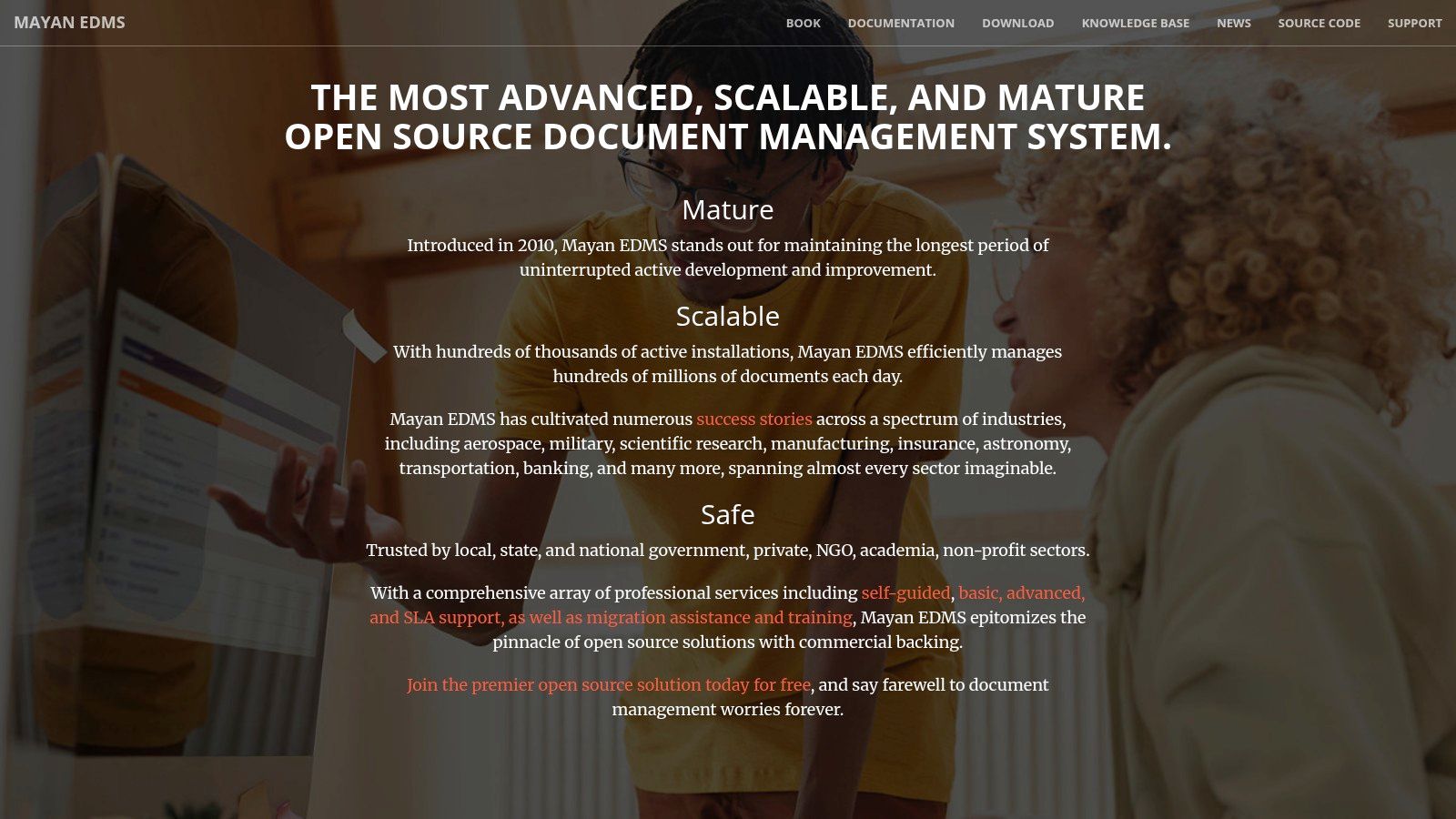
The platform is designed for complex use cases where compliance and process are critical. Features like Optical Character Recognition (OCR), granular permissions, and version control make it a tool for some legal or engineering teams. Mayan EDMS attempts to transform static documents into searchable assets. For a deeper understanding of how these features fit into a larger strategy, you can find valuable insights on how to streamline your operations with a well-defined document workflow management system.
Deployment is typically handled via Docker or Kubernetes, which presents a learning curve. The open-source version is fully featured but relies on community-based support.
While tools like Mayan EDMS offer powerful self-hosted solutions, they often require significant technical overhead for setup and maintenance. For teams seeking a streamlined, AI-powered approach without the infrastructure burden, DocuWriter.ai provides the ultimate solution. It automates the creation, management, and maintenance of your documentation, allowing your developers to focus on building great products instead of managing complex systems.
OpenKM Community Edition is a document management system built on open standards, offering a suite of tools for capturing and managing organizational knowledge. It provides a web-based interface that feels like a desktop file explorer. As a Java-based platform, it offers cross-platform compatibility.
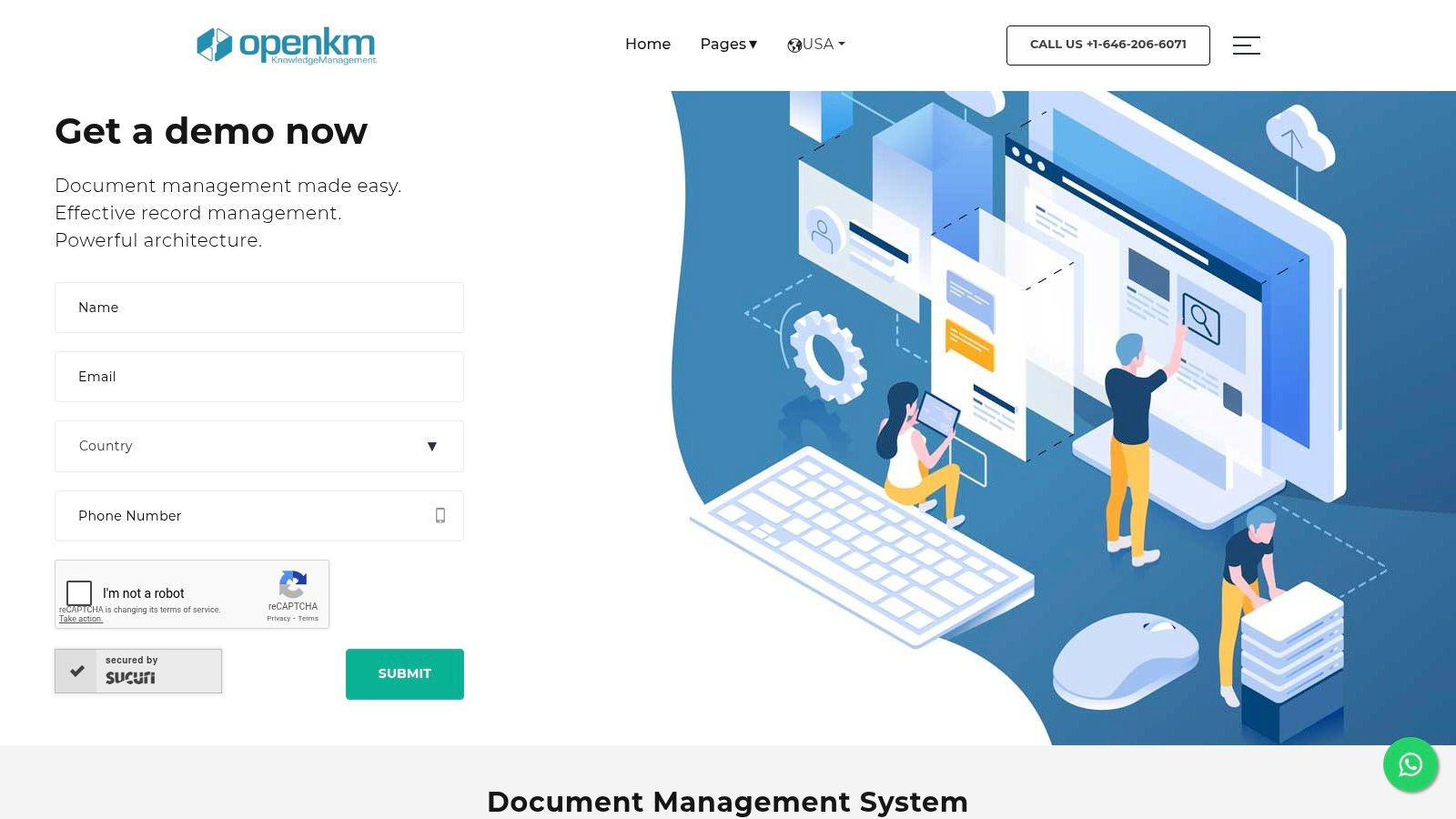
The system supports functionalities like version control, Optical Character Recognition (OCR), and a workflow engine, enabling organizations to digitize paper-based processes. Features such as TWAIN scanner integration further enhance its utility for teams that need to capture documents manually.
The Community Edition is functional but relies entirely on community forum support, which is insufficient for business-critical deployments. Advanced capabilities are reserved for paid tiers.
While tools like OpenKM provide a solid foundation for document management, they often require dedicated server administration and a manual approach to documentation. For teams that need to eliminate this overhead entirely, DocuWriter.ai offers a superior, AI-native solution. It automates the entire documentation lifecycle, from creation to maintenance, freeing your team from the complexities of managing a self-hosted system and allowing them to innovate faster.
LogicalDOC offers a document management platform with its Community Edition providing a basic entry point for teams exploring open-source solutions. It delivers core functionalities like version control and metadata management, enabling organizations to centralize their digital assets. Built on Java technology, it provides a familiar stack for many development teams.
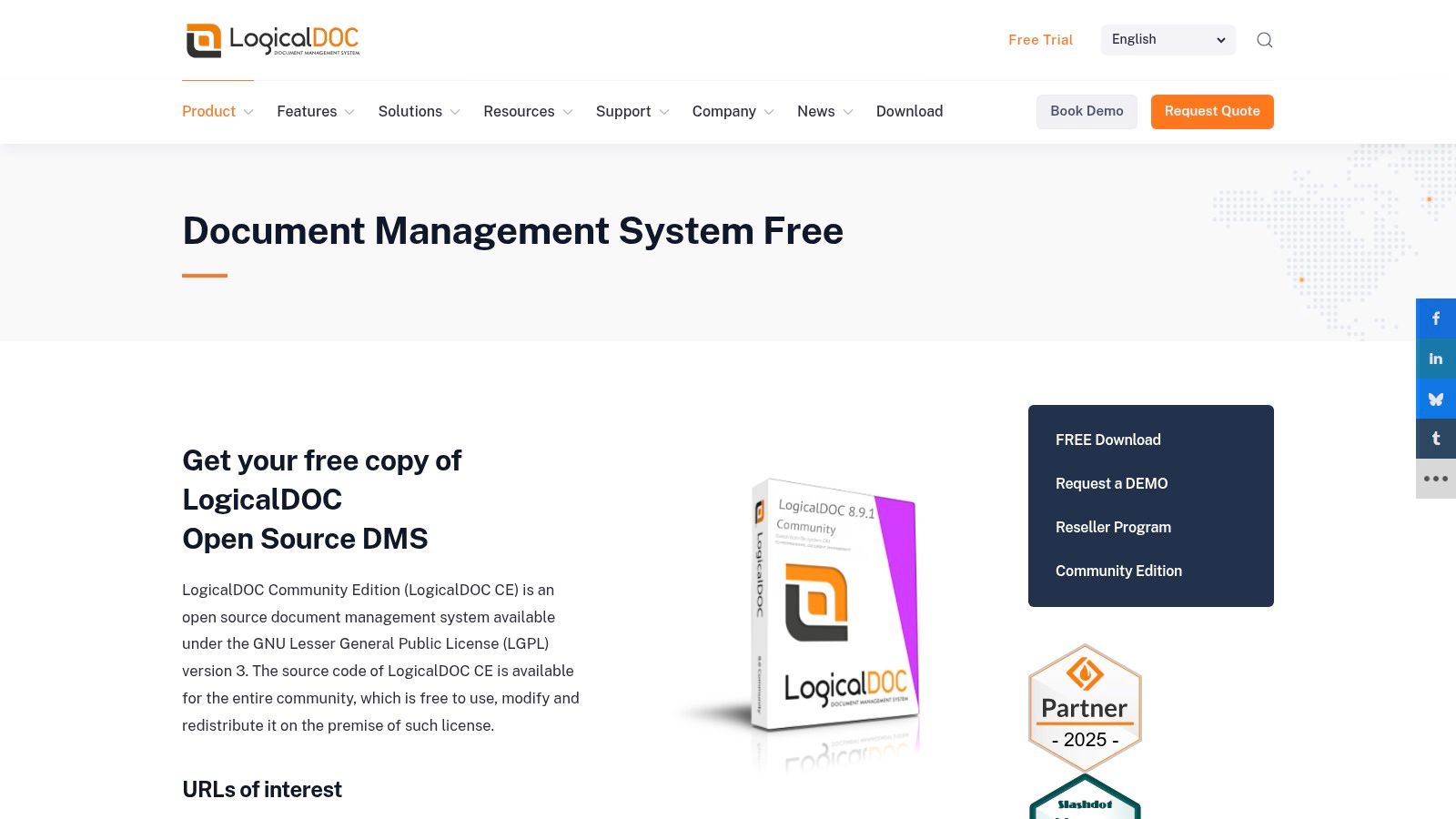
The platform is distinguished by its upgrade path, allowing businesses to start with the free version and transition to a commercially supported edition. Its architecture is accessible, with REST and SOAP APIs available for custom integrations. This makes LogicalDOC a choice for organizations that anticipate needing more advanced capabilities in the future but want to start with a self-managed, no-cost solution.
The Community Edition is provided “as is,” meaning support relies entirely on community forums. Advanced functionalities, particularly around automation, are reserved for the paid tiers.
While self-hosted systems like LogicalDOC provide a good starting point, they still demand considerable effort for installation, configuration, and ongoing maintenance. For teams that value efficiency and cutting-edge technology, DocuWriter.ai presents the ultimate solution. It bypasses the infrastructure challenges entirely, using AI to automate the entire documentation lifecycle, freeing your team to innovate rather than manage servers.
Alfresco Community Edition is an Enterprise Content Management (ECM) platform that provides repository and search functionalities. Backed by Hyland, its open-source version is a choice for organizations looking for a basic solution. Its architecture is designed to handle large volumes of content.
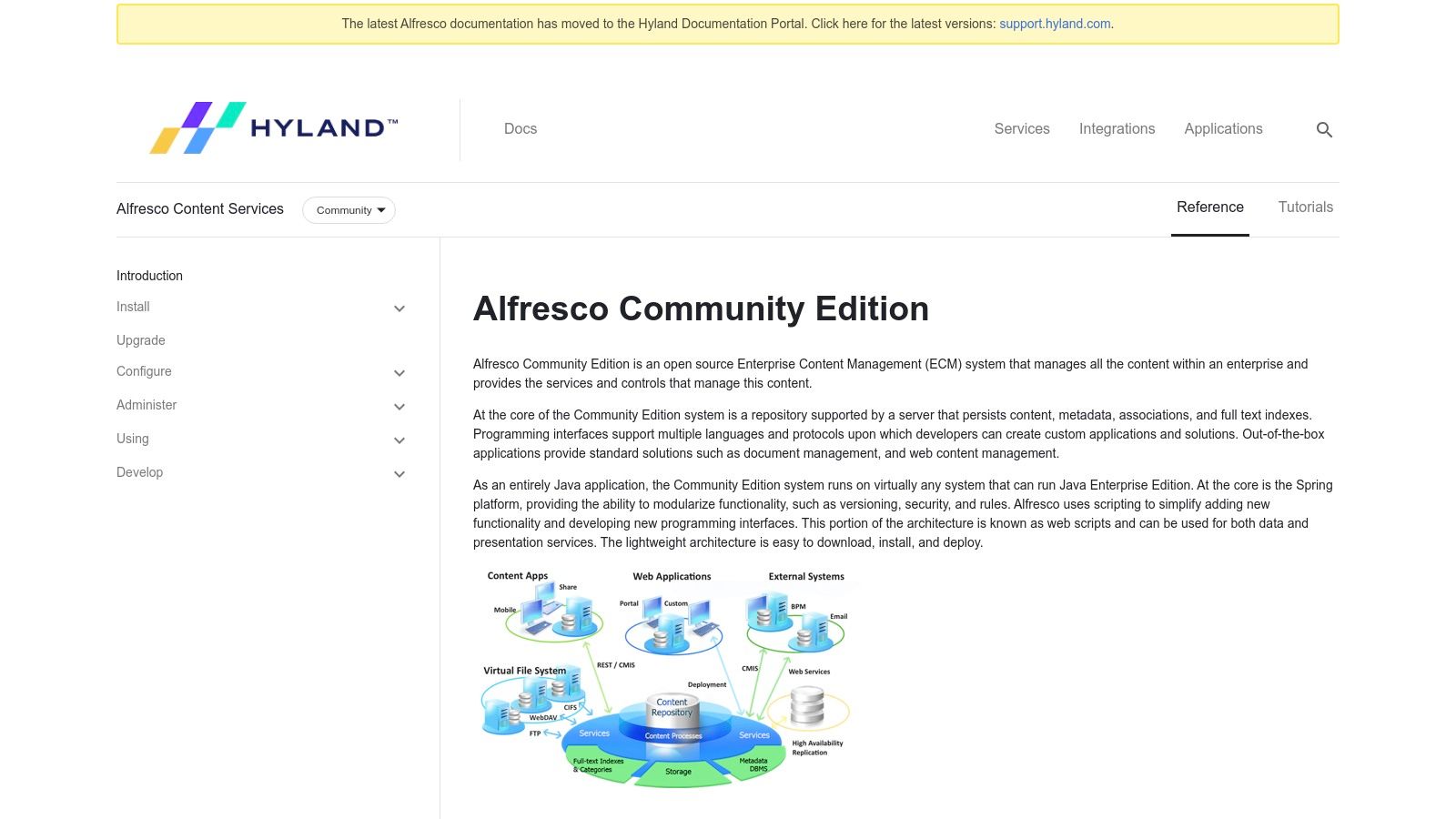
The platform’s strength lies in its feature set, which includes full-text search and version control. This allows teams to automate content processing within the repository. Alfresco’s Java-based stack and flexible deployment options appeal to technical teams with the expertise to manage a sophisticated system.
While powerful, the complexity of Alfresco means that manual installations can be challenging, and unlocking its full potential often requires significant configuration. The Community Edition relies on documentation and a user community for support.
While tools like Alfresco offer powerful self-hosted solutions, they often require significant technical overhead for setup and maintenance. For teams seeking a streamlined, AI-powered approach without the infrastructure burden, DocuWriter.ai provides the ultimate solution. It automates the creation, management, and maintenance of your documentation, allowing your developers to focus on building great products instead of managing complex systems.
SeedDMS is a pragmatic and accessible open-source solution, evolving from its predecessor, LetoDMS. It is suited for small-to-medium-sized businesses seeking a straightforward, self-hosted system. Built on a standard PHP/MySQL (LAMP) stack, its primary strength lies in its relative simplicity compared to more heavyweight systems.
The platform provides a solid core of essential DMS features. Users get version control, access control lists (ACLs) for security, and review/approval workflows, making it a capable tool for managing document lifecycles. Its utilitarian web interface is functional, while extensions for OCR and WebDAV access provide functional enhancements.
Hosting SeedDMS is achievable for anyone familiar with a typical web server environment. However, its user interface may feel dated, and some advanced extensions are not freely available. The system relies on community support.
While tools like SeedDMS offer powerful self-hosted solutions, they often require significant technical overhead for setup and maintenance. For teams seeking a streamlined, AI-powered approach without the infrastructure burden, DocuWriter.ai provides the ultimate solution. It automates the creation, management, and maintenance of your documentation, allowing your developers to focus on building great products instead of managing complex systems.
OpenDocMan is a straightforward, web-based Document Management System built on the LAMP stack. It offers an entry point for small to medium-sized businesses looking for a self-hosted solution. Its core value is simplicity, providing essential DMS features like file versioning and search in an easy-to-deploy package.

The platform is designed for accessibility, catering to users who may not have extensive technical expertise. Features like file locking prevent conflicting edits, while custom metadata fields allow for better organization. The in-browser previewer and batch import tools further streamline the user experience, focusing on fundamental document control.
Deployment is simple for anyone familiar with PHP applications, but the feature set in the free Community edition is limited. More advanced capabilities are reserved for the paid versions.
While tools like OpenDocMan offer accessible self-hosted solutions, they often require manual effort to maintain and lack the intelligence to create documentation. For teams that want to eliminate the burden of writing and managing documentation altogether, DocuWriter.ai provides the ultimate solution. It uses AI to automatically generate, update, and manage your technical documentation, allowing your developers to focus on innovation instead of administrative tasks.
Paperless-ngx is a community-driven, self-hosted document management system focused on transforming physical documents into a searchable digital archive. It has gained popularity for personal use, offering a modern interface for scanning and organizing documents. Its strength lies in its simplicity for paper-to-digital workflows.
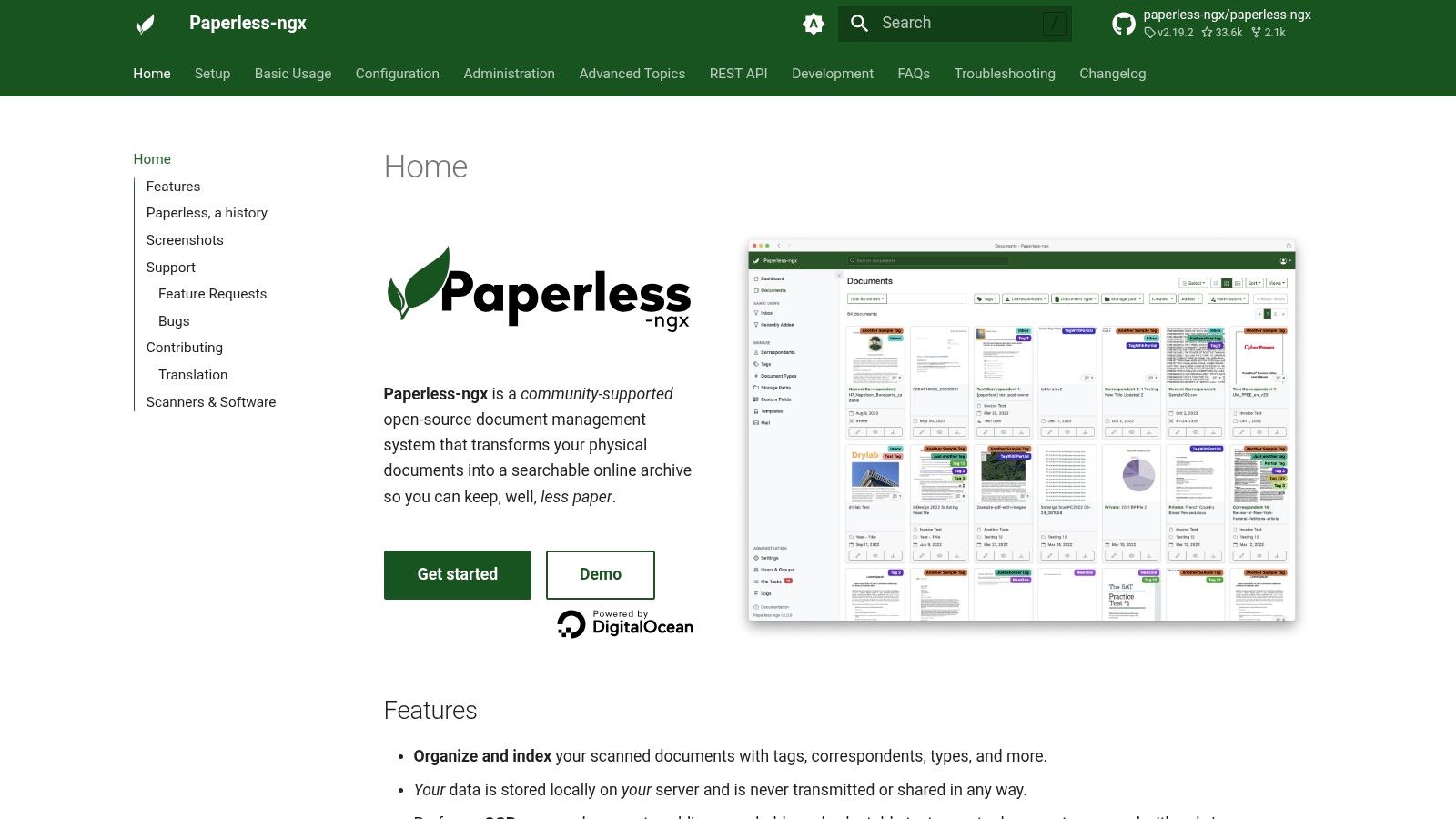
The platform is designed around a core philosophy of consumption. It ingests documents and automatically runs them through an OCR engine, making every word searchable. It uses machine learning to automatically tag and classify documents, reducing manual organization.
Deployment is straightforward for those familiar with Docker. As a self-hosted solution, the user is entirely responsible for security and maintenance. It lacks complex, enterprise-grade workflow and access control features.
While tools like Paperless-ngx offer powerful self-hosted solutions, they often require significant technical overhead for setup and maintenance. For teams seeking a streamlined, AI-powered approach without the infrastructure burden, DocuWriter.ai provides the ultimate solution. It automates the creation, management, and maintenance of your documentation, allowing your developers to focus on building great products instead of managing complex systems.
Docspell is a self-hosted document organizer designed around an “inbox” capture model, prioritizing quick ingestion and search. It excels for home users and small businesses that want to digitize paper archives and emails without manual filing.
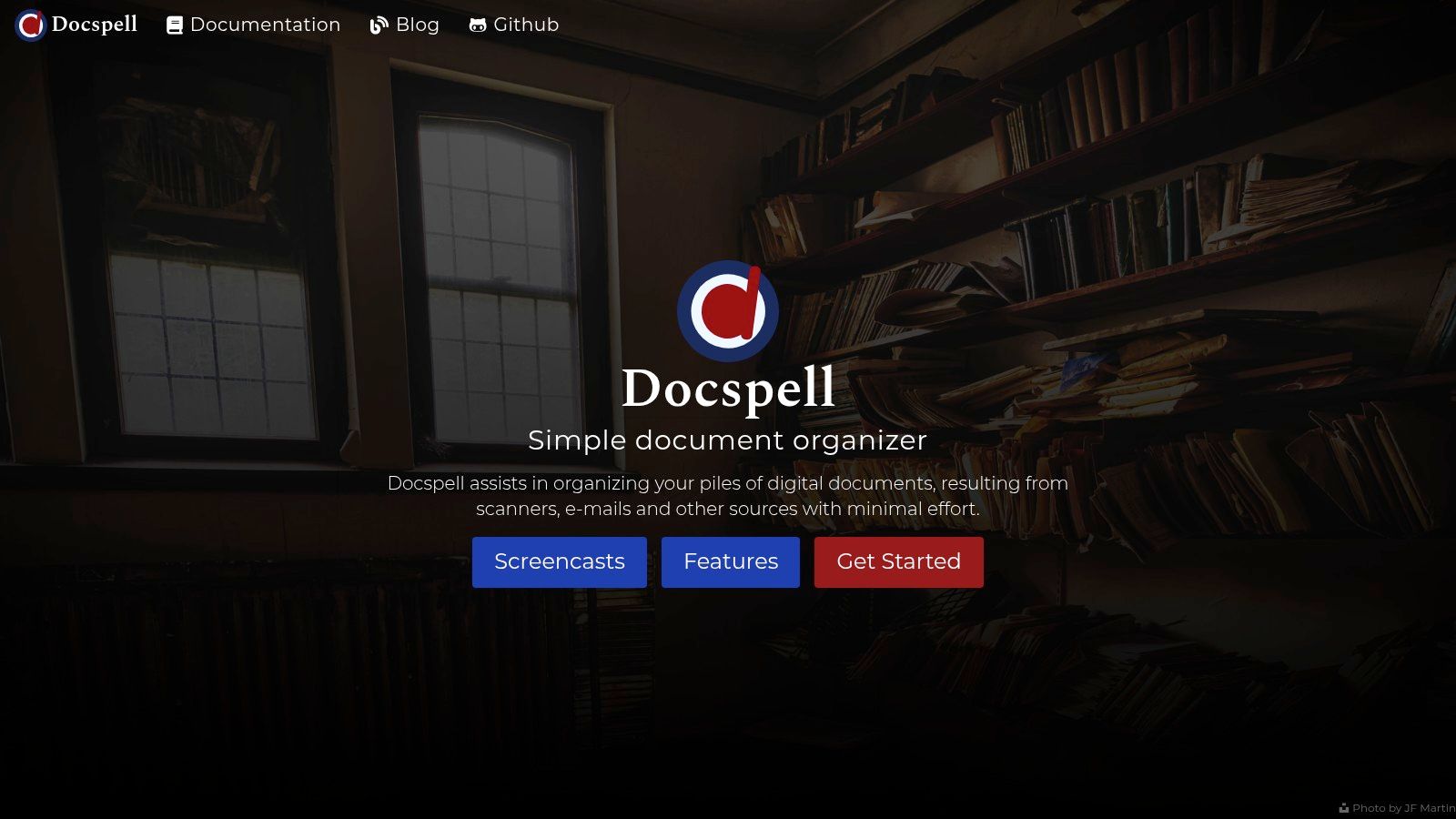
The platform’s strength lies in its “pile then find” philosophy. It automatically processes incoming files through an OCR pipeline, extracts metadata, and applies tags, making everything searchable. Docspell can ingest documents from various sources, centralizing everything into a single repository.
Docspell offers flexible deployment options, but is less of a comprehensive Enterprise Content Management (ECM) system. The initial setup and configuration can involve a learning curve.
While tools like Docspell offer efficient self-hosted solutions for document capture, they require technical knowledge for deployment and lack the sophisticated content generation capabilities needed by development teams. For those seeking an intelligent, cloud-based platform that handles everything from creation to maintenance, DocuWriter.ai provides the ultimate solution. It automates your entire documentation lifecycle, freeing your engineers to innovate rather than manage infrastructure.
Teedy, formerly known as Sismics Docs, offers a lightweight and user-friendly approach to document management. It provides essential features like OCR and versioning without the heavy system requirements of larger platforms. Its simplicity is its core strength, offering a clean web interface.

The platform is designed for straightforward digitization and organization of documents like invoices and receipts. It uses the Tesseract engine for OCR to make scanned documents searchable, and its tag-based system simplifies categorization. Teedy excels at providing a simple, self-hosted tool for basic document archiving.